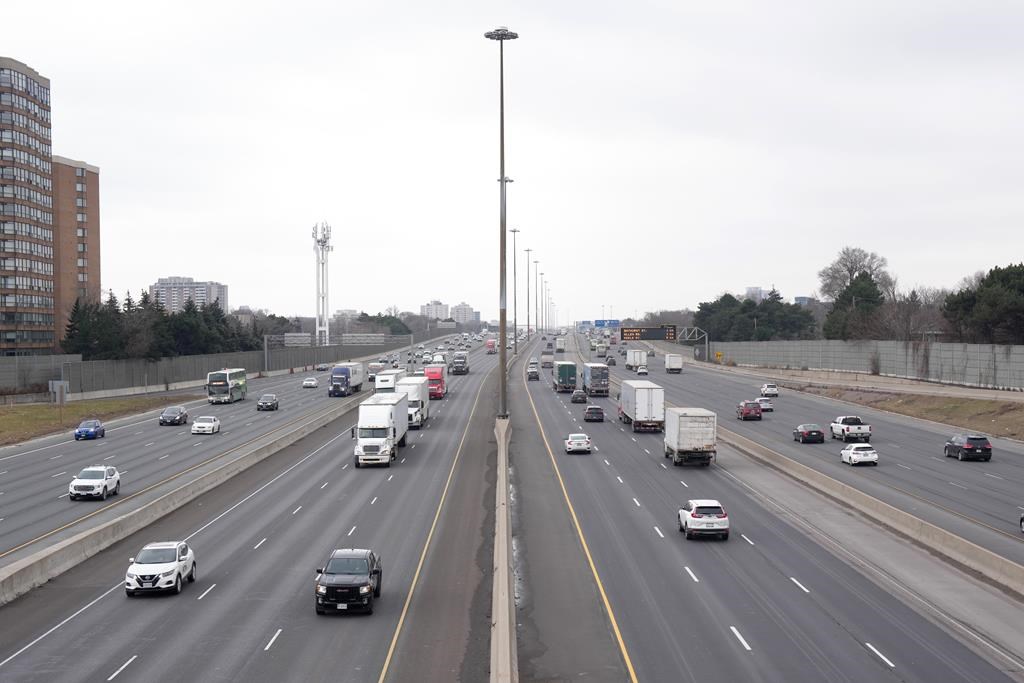TORONTO — Ontario drivers could soon cut their insurance costs by opting for less coverage, under reforms proposed in the provincial budget tabled Tuesday.
Medical, rehab and attendant care coverage would still be mandatory, the budget says, but all other benefits would become optional.
If drivers have access to certain benefits through workplace plans, for example, they shouldn’t have to pay twice through their auto insurance policy, the government argues.
“This would provide drivers with an opportunity to lower their premiums by taking advantage of a wider range of coverage options to meet their needs,” the government wrote in the budget.
The proposed changes also include making auto insurance pay for medical and rehabilitation benefits before drivers put those costs through their extended health-care plans.
The reforms won’t necessarily lower auto insurance rates, Finance Minister Peter Bethlenfalvy suggested.
“I don’t think this is where we have any sort of specific numbers in terms of the rate of increase or a decrease,” he said.
“What we’re really focused on is making sure that we provide as much choice and convenience.”
The government is also trying to encourage innovation and competition in the market, which could help on prices, Bethlenfalvy said.
NDP Leader Marit Stiles suggested that the people who will choose to have less auto insurance coverage may have to do so for the wrong reasons.
“My concern, and I think the concern of our caucus and our party, is this is going to force Ontarians who are looking for more affordable options frankly to take on an additional risk that they shouldn’t be forced to take on,” she said.
That is already happening, said Laurie Tucker, the president of the Ontario Trial Lawyers Association.
“In my experience dealing with injured people in my practice, very few people actually buy the available optional insurance coverages that are available, even now,” Tucker wrote in a statement.
“As Ontarians struggle to pay for housing and put food on the table, many vulnerable consumers will choose not to opt in and then they will be left without adequate coverage in the case of an accident.”
The government should have instead fulfilled a commitment it made in 2019 to restore the benefit limit for people seriously injured in collisions to $2 million from $1 million. Making this move instead helps the insurers instead of drivers, Tucker said.
“The decision to allow greater consumer choice takes a page right out of the insurance industry play book,” she wrote.
“While consumer choice sounds attractive, when it comes to auto insurance, it means less protection for drivers in the long run. The end result is usually higher profits for insurance companies and less coverage for consumers.”
The Progressive Conservatives have also announced auto insurance reforms in previous budgets, and premiums have actually gone up, Stiles noted.
Average premiums have risen by less than 10 per cent since 2019, according to the Financial Services Regulatory Authority of Ontario.
The former Liberal government promised in 2013 to lower rates by an average of 15 per cent by 2015, which then-premier Kathleen Wynne later admitted was a “stretch goal,” and at the time they were defeated in 2019 the average rate decrease was about 3.3 per cent.
The Progressive Conservative government has also previously promised to examine the auto insurance industry practice of setting different rates based on postal codes and there is now a pilot project in the works with participating insurers looking at different ways to apply rates by territory.
This report by The Canadian Press was first published March 26, 2024.



